Matador Network's Blog, page 872
April 27, 2020
Bald eagles nesting in Arizona

For the first time in decades, bald eagles are returning to the saguaro cacti of Arizona. The Arizona Game and Fish Department released a photo last week showing a pair of bald eagles and their eaglets in a nest made between the arms of a saguaro cactus.
Kenneth “Tuk” Jacobson, the coordinator of raptor management for the Arizona Game and Fish Department, explained to the Associated Press that it’s the first record of bald eagles nesting in this environment since 1937. There have been sightings of bald eagles nesting in cacti in Mexico, but this is the first time in decades biologists get to see it in Arizona.
It was first spotted by a member of the public and later confirmed by Jacobson.
“It was absolutely amazing when I got the first report,” Jacobson told Cronkite News. “When we were able to get out there and see [the nest] from the ground and verify it, it was quite exciting.”
A helicopter survey produced some incredible photos of the eagles and eaglets, perched atop the cactus. The Arizona Game and Fish Department isn’t revealing the nest’s location, however, to protect it from tourists who might come and disturb it.
How Arizona is this! Our eagle survey team captured this image of a bald eagle family nesting in the arms of a saguaro – a rare sight! In fact, it's the first time an image of eagles nesting in a saguaro has been captured in Arizona. pic.twitter.com/OmXRGi9mVE
— Arizona Game & Fish (@azgfd) April 16, 2020
“This is one of those things that is pretty exciting,” said Jacobson, “but the last thing we want to do is draw a lot of attention to it. If we get a lot of people coming out and checking it out, we may end up inadvertently causing problems for their nesting attempts.” 

More like this: Video shows Yosemite National Park full of animals in the absence of humans
The post Bald eagles spotted nesting in Arizona saguaro cactus for the first time in decades appeared first on Matador Network.
April 24, 2020
Citizenships you can get by descent

The US passport is very strong, meaning US citizens can visit 184 countries without the need to obtain a visa. However, if you like what you see and want to remain abroad for a little longer than a couple of weeks, you typically only have a few months. Failure to leave when you’re supposed to could result in deportation or an indefinite ban from the country. However, there are a few ways around the limit — you could navigate the complex process of obtaining a long-term residency or work visa, or you could earn a passport by descent and become a full-fledged citizen of that country. When it comes to Europe and the Schengen zone, the latter option means you’ll also have access to free travel and residence throughout the entire continent. While this might sound like the most difficult route, obtaining citizenship by descent is actually easier than you might think, especially for a select few countries.
What is citizenship by descent?
Earning citizenship by descent is straightforward. If you can prove that you are directly descended from relatives born in a given country — usually grandparents, but sometimes even great grandparents — you could be eligible to earn citizenship in that country. With citizenship comes a passport that will allow you to stay in that country for as long as you like, and possibly even grant you freedom of residence in other affiliated areas as well. Requirements vary immensely among countries offering such programs, so it’s important to pay attention to the details of your desired destination and potentially even hire a lawyer to make the process smoother.
Dozens of countries offer heritage-based citizenship programs, but these are the ones with the most straightforward process.
1. Italian citizenship

Photo: Efired/Shutterstock
Anyone with more than 10 percent Italian heritage tends to cling to their Italian heritage with fierce pride and mention it as often as possible. Well, if you’re from Italian origins, now’s your chance to turn your favorite topic of conversation into an actual legal status.
Obtaining Italian citizenship is simple. While most countries require your parents or grandparents to have been born there, Italy lets you go back even further. If you can prove that a great-grandparent was born in Italy, you will be eligible for citizenship yourself. However, your lineage must be “uninterrupted”, meaning none of your ancestors can have renounced their Italian citizenship before passing it along to their children.
Since so many US citizens qualify for Italian citizenship by descent, it can take up to 18 months to get an appointment to review your application. So if you’re interested, you’d better apply quickly.
2. Irish citizenship

Photo: shutterupeire/Shutterstock
Irish citizenship is similarly straightforward. If you have a grandparent born in Ireland, you are entitled to Irish citizenship by descent. If this is the case, you’re required to register yourself on the Foreign Birth Register before you can apply for citizenship. However, it takes between nine and 12 months for the Foreign Birth Registration application to be processed.
If your grandparents weren’t born in Ireland but your great-grandparents were, you’re not entirely out of luck. You can obtain Irish citizenship by descent through a great grandparent only if one of your parents has already registered themselves on the Birth Register in the past.
To be eligible, you must be prepared to submit a civil birth certificate, the original civil birth certificate of a parent or grandparent who is an Irish citizen, and other relevant forms of identification.
3. Polish citizenship

Photo: Roman Babakin/Shutterstock
Much like Italy, Poland’s citizenship program is based on uninterrupted lineage. As long as none of your ancestors renounced their Polish citizenship at any time, you will still be eligible. You can trace your lineage back to your great-grandparents, which makes Polish citizenship one of the most accessible nationalities to obtain.
What complicates the process, however, is Poland’s complex political and military history. Many families were displaced by war in the early 20th century, and many documents destroyed, potentially making it difficult to supply the necessary proof of ancestry. This includes birth certificates, proof of residency, and other documents.
You must be able to prove that you have parents, grandparents, or great-grandparents who were either born in Poland after 1920; left Poland before 1920 (but whose residential address can be found in the Polish, Prussian, Russian, or Austro-Hungarian registers); or who maintained Polish citizenship until you were born.
4. Greek citizenship
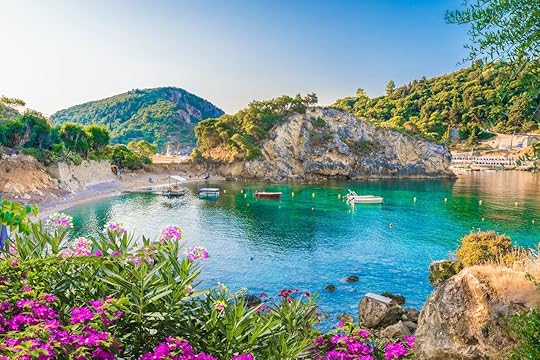
Photo: Balate Dorin/Shutterstock
Unfortunately, great-grandparents aren’t fair game when it comes to obtaining Greek citizenship. If you can prove that a parent or grandparent was born in Greece, however, you’re golden. You will be required to provide the birth certificate of the ancestor in question, and — here’s the catch — the documentation must be issued by a Greek municipal authority. That means your ancestry must have been registered at the municipality of a town in Greece, and the birth certificate needs to include the municipality number. After this, you must obtain birth, death, and marriage certificates for all subsequent ancestors, translated into Greek.
For this reason, it’s recommended that you hire a translator to make sure all your documents are in order and are legible by the necessary authorities.
5. Portuguese citizenship

Photo: ESB Professional/Shutterstock
Portugal’s process differs from other countries, but for those eligible, it presents an easy path to citizenship. Portugal has a special citizenship program for those of Sephardic Jewish heritage, designed to help the ancestors of Jews persecuted in the 16th-19th centuries to reconnect with their ancestral roots.
To obtain Portuguese citizenship, you don’t necessarily need to provide a relative’s Portuguese birth certificate. You do, however, need to establish that your ancestor, after leaving Portugal, maintained ties with diasporic Sephardic Jewish communities, many of which migrated from Portugal to Greece, Turkey, Morocco, and elsewhere in Eastern Europe, before the Holocaust. Proving an emotional connection to Portugal and a continued immersion in Portuguese or Sephardic communities is sufficient to meet this requirement.
For many Sephardic Jews, this requirement may be easy to meet, as its vague terms are designed to accommodate families whose documents may have been lost amid centuries of persecution. Birth certificates, letters, documents in ladino (a Judeo-Spanish language), Portuguese last names, and any documents relating to an ancestor’s affiliation with a diasporic Sephardic community are all fair game.
It’s important to note that you do not need to be Jewish yourself to take advantage of the Portuguese Sephardic citizenship program. As long as you can prove that you’re descended from a Sephardic community of Portuguese origin. 

More like this: The 9 most difficult travel visas for Americans to obtain
The post 5 passports you can obtain through descent appeared first on Matador Network.
How to pitch a tent
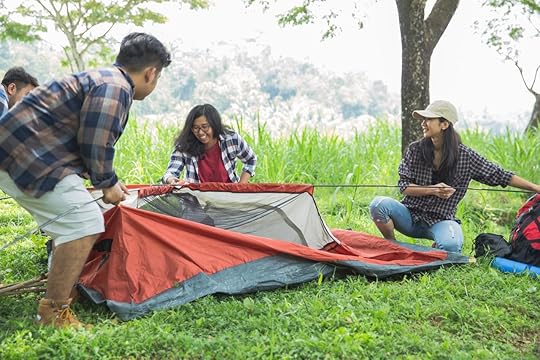
Camping is the ultimate way to relax in nature. But in order to actually camp, you first have to set up your tent — a process that can be as frustrating to the first-timer as it is second nature to the Eagle Scout. This handy guide to pitching a tent walks you through the steps in detail and, alongside the stick-figure drawings in your tent’s instruction booklet, will get you through the process with both yourself and your tent in one piece. You got this.
What to have before leaving home

Photo: Sutat Pavilairut/Shutterstock
Before leaving home, you need the right tent for your excursion. If you’re car camping, which means you camp at a campsite or at a “dispersed” camping spot alongside or near your vehicle, you can be less choosy about the type of tent. The biggest priority is that it will accommodate the number of people who need to sleep in it and that at least one person in the group knows how to set it up and take it down. If you plan to backpack, i.e. hike into a campsite not near your vehicle, you’ll want a lighter tent — one that doesn’t weigh more than 2.5 to three pounds per person that will sleep in it.
We recommend practicing setting up your tent in a yard or park first, just to be prepared in case you’re missing a stake or can’t figure something out. Here is what you need to have:
Your tent and rainfly, and the rucksack they came in
Tent poles
One stake for each corner of the tent (four for a typical one- or two-person tent) plus a few extras
Instructions that came with your tent, if applicable
When you arrive
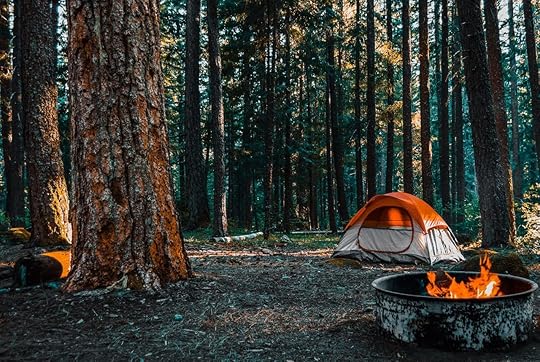
Photo: Kevin Capretti/Shutterstock
If there’s one piece of advice first-time campers should take to heart, it’s this: Set up your tent as soon as you get to camp. For one, it’s much easier to do so while the sun is up. Second, the beer and general lethargy that accompanies an evening around a campfire will just make the process more daunting the longer you wait.
If camping becomes part of your regular weekend plans, the time will come when you head up after work on a Friday afternoon and don’t arrive until after dark. Get a Black Diamond headlamp — one for each person — and keep it with your camping gear. That way you’ll have light to set up the tent with. The Cairn lantern from Lander is an excellent additional light source that doubles as a hanging light for the inside of your tent. It also charges your phone battery simultaneously — making it the smartest $50 you’ll ever spend on camping additions.
Identifying the right spot

Photo: simoly/Shutterstock
Before you ever take the tent out of the rucksack, ask yourself a few questions about how you sleep normally. Do you need absolute quiet? If so, it might be best to set up farther from the campfire in case you hope to slip off to bed while others are still hanging around. Don’t go too far, though, or you might find yourself kept awake by the wind howling through the branches. Was that a bear? A moose? Probably not, but it can be hard to convince your mind otherwise when the closest accomplice is 100 yards away. If available, the sound of a running stream can do wonders for calming the mind. But don’t camp closer than 200 feet from any water source, particularly if you, or your dog, might wake up in the night to relieve yourself.
Much as a lawn chair needs stable ground to keep all four legs down, a tent needs a flat space for proper setup. You don’t want to be sleeping at an angle, anyway. The first actual step in setting up a tent is to find a flat spot — as flat as possible, at least — that’s free of jagged rocks and branches. Spend a minute or two clearing the area to avoid being jabbed in the back in the middle of the night and potentially poking a hole in the bottom of your tent.
Take advantage of trees, big rocks, and other natural barriers to wind and rain. A cool treat you can often give yourself is to angle the door of your tent towards an amazing view — a towering peak, an expansive valley. When possible, make that view something that the early morning light will illuminate in a colorful hue. That way, you’ll wake to an Insta-worthy photo opp first thing in the morning.
Equally important is not setting up right next to the fire (heat and fire hazard) or near food (which could attract bears). Always leave food in a bear canister or in your vehicle.
The actual labor

Photo: Odua Images/Shutterstock
Now comes the fun part. Pitching a tent becomes habit after you’ve done it a few times, but that first time ever tends to be an exercise in humility. Follow these steps in order to minimize frustration.
Lay the tent out over the spot. Stretch your tent out to cover as much space as you can. If you need to make any adjustments to the spot to accommodate your tent, you can do so now.
Insert the tent poles. This is often the most frustrating part of setting up a tent because it’s easy to skip a hole — so think of the process as putting on a belt. If you don’t keep the belt underneath each loop, it looks funny and doesn’t hold your pants tightly enough. Slide the tent poles into the designated slots on your tent, carefully following the instructions provided. Don’t miss any holes or slots — and especially don’t miss the hole, hook, or groove at the top of the tent — or it will collapse in the middle, the camping equivalent of your pants falling down.

Photo: brizmaker/Shutterstock
Do one pole at a time, even if there are two of you. Have the second person stand on the other side and guide the pole through, securing it in place once it’s ready. Then repeat for the next pole. Once you have passed a pole through to the other side, pull it as tight as possible and insert it into the slot or hole provided. This process will erect your tent. The tighter the pole, the tauter your tent, meaning it’s as sturdy as can be.
Stake the tent. For optimal sturdiness, stretch the stake straps on the corners of the tent out as far as possible before staking. Drive the stakes down with your foot or a hammer, being careful to keep them as close to a 90-degree angle with the ground as possible. Use a rock or other weight to hold a stake down if the ground is fragile. Don’t push the stakes down too far, or else you’ll have a heck of a time pulling the stake out when it’s time to pack up. Stake down extra holes in the tent corners with any extra tent stakes to prevent potential impact from rough winds or other inclement weather.
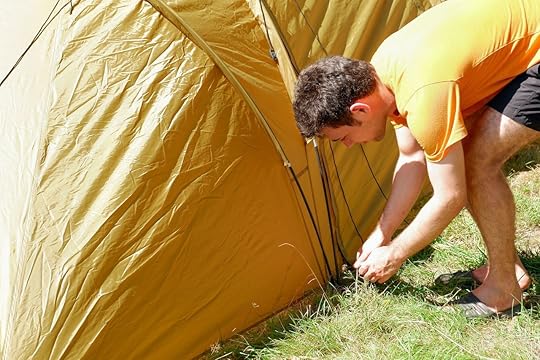
Photo: Elgub/Shutterstock
Attach the rainfly. The rainfly is crucial to staying warm and dry during rain or wind. It slides over the top of the tent and fastens into the same hold as the tent stakes — in many instances, you’ll need tent stakes to secure the rainfly. If your rainfly has cinches, pull them as tight as you can. Also, be sure to line up the rainfly’s zip door with the tent’s door, or else you’ve effectively locked yourself out. If you’ve put the rainfly on the right way, the zippers should line up seamlessly.
If it’s windy, use the guylines. Now that your tent is upright, make it as secure as possible by tying any guylines — those random-seeming thin ropes on the rainfly — to something sturdy. Most tents and rain flies come with small loops on the edges called guy out loops. On the end of the guyline, there is a plastic feeder called a tensioner, which allows you to lengthen the guyline, or pull it taut, as needed. There isn’t a set place that the rope fastens into.
You can tie it around a stump or rock, but the ideal scenario is to pass a bit of extra rope through the tensioner and loop it. This allows you to put a stake through the loop and into the ground. Take the wind into consideration here. The point of guylines is to secure against wind, so you’ll want to tie one guyline on either side of the tent. No need to set the guylines if there’s no wind in the forecast.
Unfold your lawn chair and crack a cold one. The hard work is done. Toss your sleeping bag, ground pad, and any other overnight belongings into the tent, zip the door, and head back to the campfire. It’s time to revel in your outdoorsmanship.
Making your tent comfortable

Photo: Dmitriy Kozhanov/Shutterstock
The best way to sleep in comfort inside your tent is to have a ground pad underneath your sleeping bag. This inflatable pad will act as a body-sized pillow of sorts (though you’ll still want a pillow for your head) that gives you a level sleeping field free of debris that may poke you should you rollover. Also, a groundpad can help keep you warm in instances where coldness is seeping up from the ground itself. You can go anywhere from super cheap and simple, such as the Therm-a-Rest Ridge Rest pad, or opt for a more expensive, elevated platform like the Therm-a-Rest UltraLight Cot.
Camping pillows such as REI’s Trailbreak work well for your head, though they take up pack space and might not be ideal for backpacking. Some opt for a tarp to place underneath all of this, along the floor of the tent, to double-up on padding. 

More like this: How camping became the quintessential American pastime
The post How to pitch a tent like a pro on your first camping trip appeared first on Matador Network.
International LGBTQ books

Queer travel is all about connection. From making new friends to exploring different cultures, LGBTQ globetrotters have a long history of using tourism as a means of building community. It’s how we grew gayborhoods in the centers of urban areas and colonized coastal summer towns. After hopping on planes, trains, and automobiles in search of kindred spirits, we brought home stories to our best Judys about the queer places we found. Today, the coronavirus pandemic is limiting our ability to connect in person, so while physical travel is off the table, consider filling that table with a stack of queer travel books.
This list of LGBTQ stories offers an opportunity to meet a variety of queer people around the world without leaving your home. Better than guide books filled with lists of top tourist destinations, each novel dives deep into a different area by connecting you to the sights, sounds, tastes, and tales experienced by people who’ve been there in person. Whether it’s a gender-queer romp around America or a sensual romance in Rome, these novels will help satiate even the antsiest wayfarer by allowing your mind to wander somewhere new.
Tip: Creating new ways to connect with friends in light of the pandemic will help ease feelings of isolation, so consider starting a queer quarantine book club. Discussing the works of Patti Smith and James Baldwin will be a welcome reprieve from fretting over current events.
Check to see if your local bookstore carries any of these titles and provides pick-up or delivery services. Companies like Amazon will survive the economic turmoil of this crisis, but smaller shops need our help. Remember to support your local businesses through this challenging time.
1. Just Kids by Patti Smith — New York City

Photo: Bloomsbury
Patti Smith and Robert Mapplethorpe grew into their artistic power as friends, lovers, and collaborators just as the Big Apple became the cultural epicenter of the world. Smith’s memoir, which chronicles their relationship as they reach the brink of fame, visits sacred sites in old New York where the two rubbed elbows with people like Janis Joplin, Jimi Hendrix, Allen Ginsberg, and Andy Warhol. Their bohemian life, from a ramshackle Brooklyn apartment to the hallowed halls of the Chelsea Hotel, invokes a bygone New York before finance bros colonized Manhattan and artists were the city’s shining stars.
Patti Smith gave a Bowie-style middle finger to gender long before queer identities were split into acronyms. Mapplethorpe explored sexuality with an artistic ferocity that eventually sparked debates over censorship in America. Their artistic triumphs left an indelible mark on queer culture as we know it today. Just Kids is a celebration of both the luminaries and the city that fueled their fire.
2. Death in Venice by Thomas Mann — Venice, Italy

Photo: Penguin Random House
This 1912 novella by Thomas Mann follows a 50-year-old writer, Gustav von Aschenbach, on an impulsive journey to the Queen of the Adriatic where he becomes obsessively enamored with a beautiful (and alarmingly young) Polish boy. During his stay, the city becomes the epicenter of a cholera outbreak, and Aschenbach’s irrational longing leads to his demise.
The parallels between modern times and Mann’s pandemic, based on a Venetian cholera outbreak in 1911, are frightening. It’s a timely reminder to stay home — even if you’re raring for a meet-cute with a Grade A slice of meat. Don’t be like Aschenbach. Both Venice and your virility will be intact once the coronavirus outbreak ends.
3. Less by Andrew Sean Greer — Mexico, Italy, Japan, Germany, Morocco, and many more
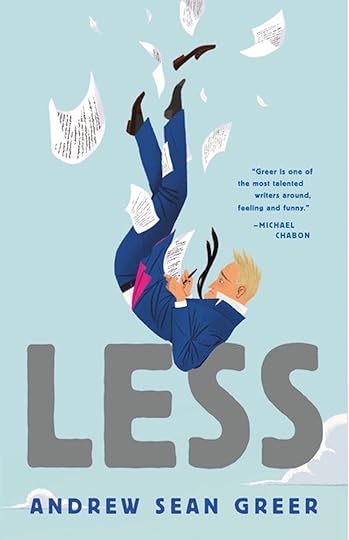
Photo: Lee Boudreaux Books
Andrew Sean Greer’s satirical send-up of a semi-successful writer on the dawn of his 50th birthday is a delightful beach read (i.e. an easy, breezy ray of sunshine). The story follows Arthur Less, “the first homosexual ever to grow old,” as he avoids attending a former boyfriend’s wedding by accepting invitations to events all over the world. Hilarity ensues as the lovable Less encounters unexpected hiccups throughout his journey, each one making him more endearing than the last. This feel-good queer travel book is just as poignant as it is side-splitting, a feat that earned Greer the Pultizer Prize for Fiction in 2018.
4. Real Queer America: LGBT Stories from Red States by Samantha Allen — United States

Photo: Little Brown
In 2017, GLAAD Award-winning journalist Samantha Allen set out on a road trip to visit queer enclaves in conservative American states. Throughout her travels, Allen shares personal anecdotes about transitioning from a confused Mormon boy to a happily married trans woman.
From interviews with people like the executive director of Equality Utah and a black trans activist in Texas, Allen paints a rainbow-hued picture of areas often overlooked in favor of LGBTQ hubs like New York or Los Angeles. Her adventures in what many may consider flyover country are an eye-opener as to where queer Americans can find community in the 21st century.
5. When Brooklyn Was Queer by Hugh Ryan — Brooklyn, New York

Photo: Macmillan Publishers
When Brooklyn Was Queer is the LGBTQ history no one told you about because they were too busy discussing gay life in Manhattan (yawn!). Hugh Ryan’s rigorous research on New York’s hippest hood chronicles Brooklyn before Stonewall — when poets like Walt Whitman ruled the roost, and queer life flourished among the borough’s waterfront. Be it bourgeois Brooklyn Heights or the nefarious Navy Yard, Brooklyn has a long history as a gay hotspot, and Ryan’s astonishing account leaves no stone unturned in examining the evidence.
6. Paul Takes the Form of a Mortal Girl by Andrew Lawlor — United States

Photo: Rescue Press/Shutterstock
Twenty-three-year-old Paul has a special secret: He can transform from a boy to a girl at the drop of a hat, and he uses this sci-fi superpower to his sexual advantage. This gender-queer Bildungsroman travels all around America, proving that gender is fluid no matter where you go and playing with binary can be a whole lot of fun. There’s no one more suited to tell this tale than author Andrea Lawlor, a writing professor at Mount Holyoke College who identifies as non-binary.
7. Giovanni’s Room by James Baldwin — Paris, France

Photo: Penguin
Many of the people and places explored in Giovanni’s Room were drawn from American author James Baldwin’s experiences while living abroad in Paris. Although much of the story takes place in the jail-cell style room of the protagonist’s lover, the story’s drag queens, hustlers, and queer cafes are all indicative of gay Parisian life in the 1950s.
The novel, which follows an American man named David in his life before, during, and after a lurid love affair with the eponymous character, mixes the elegance of Hemingway with the queerness of Vidal while exploring themes related to bisexuality, identity, and shame.
8. Gay Berlin by Robert Beachy — Berlin, Germany

Photo: Penguin Random House
Berlin is ostensibly the queer capital of Europe, and as evidenced by historian Robert Beachy, it was once the queer capital of the world. This non-fiction history lesson explores the origins of modern society’s understanding of homosexuality, starting in mid-19th century Berlin and leading to the Nazi raids that halted the city’s sexual revolution.
Reading about Berlin’s liberal past makes sense of its current place in the pantheon of queer destinations. Germany’s capital is the grand-daddy of LGBTQ culture, and Beachy’s book gives the city the praise it deserves.
If history books are too dry for your taste, Charles Isherwood’s The Berlin Stories offers a sweet snapshot of the city during Hitler’s meteoric rise. The series of fictional tales, used as the source material for the musical Cabaret, remembers the seedy side of queer Berlin right before the Iron Curtain came crashing down.
9. Find Me by André Aciman — Rome, Italy

Photo: Macmillan Publishers
If you haven’t read André Aciman’s Call Me By Your Name — or at least seen the movie — chances are you’re living under a heterosexual rock. If so, start there. Find Me, the sequel to Oliver and Elio’s steamy Italian seaside romance, builds on the characters’ stories, so reading its predecessor is necessary.
Much like the first novel, Aciman uses his flowering prose to make each backdrop in Find Me (Rome, Paris, and New York City) appear more beautiful than the last. While the sequel may be a bit less buoyant than the first, it still whips up a series of love stories sweeter than a freshly picked apricot (yes, that’s a Call Me By Your Name reference). Although Elio and Oliver aren’t initially the central characters in this novel, it’s well worth the wait to read their second chapter.
10. Under the Udala Trees by Chinelo Okparanta — Nigeria

Photo: Houghton Mifflin Harcourt
Chinelo Okparanta’s Under the Udala Trees chronicles the life of Ijeoma, a young lesbian forced to face her complicated relationship with sexuality in war-torn Nigeria. Although the story takes place in the 1960s, this 2015 novel is a sharp criticism of Nigeria’s current anti-LGBTQ laws. The year before Okparanta’s book was published, Nigerian president Goodluck Jonathan signed a bill criminalizing same-sex relationships. This novel is a reminder of the atrocities faced by queer communities living outside liberal-minded countries in North America and Europe.
11. How to Write an Autobiographical Novel by Alexander Chee — San Francisco, California, and New York, New York

Photo: Houghton Mifflin Harcourt
Getting lost in gay writer Alexander Chee’s collection of personal essays is easy. Whether it’s dressing in drag to strut down Castro Street in San Francisco or catering events at a Park Avenue maisonette in New York City, Chee’s powerful prose transports the reader to a new world with the opening line of each story. His memoirs are all chock full of wisdom — be it managing grief, tending a rose garden, or even writing a novel — but in light of the coronavirus pandemic, the essay “After Peter” feels most resonant. “The men I wanted to follow into the future are dead,” Chee writes in response to the friends and lovers he lost to AIDS. “I feel I owe them my survival.” With a book this exceptional, there’s no doubt his stories will live on long after we’re all gone. 

More like this: 12 books by black authors that will feed your desire to travel
The post 11 epic LGBTQ travel books to explore the world from home appeared first on Matador Network.
Moon’s surface map

The moon might not feel like much of a mystery since humans have already set foot on its surface, but for most of us, it’s still just a silver circle in the sky.
One of the reasons the moon remains a relative question mark is because we haven’t mapped its surface, so unlike Earth, the average person has no idea what the moon actually looks like. Now, however, the United States Geological Survey (USGS) is pulling back the curtain, sharing the first-ever mapping of the lunar surface.

Photo: USGS
According to the USGS, this is the first time the “entire lunar surface has been completely mapped and uniformly classified by scientists from the USGS Astrogeology Science Center, in collaboration with NASA and the Lunar Planetary Institute.”
To create the Unified Geologic Map of the Moon, scientists compiled a decade’s worth of data, gathered from Apollo-era regional maps and recent satellite missions to the moon. In a statement, USGS Director and former NASA astronaut Jim Reilly said, “It’s wonderful to see USGS create a resource that can help NASA with their planning for future missions.”
The map will prove essential as the scientific community continues to expand its understanding of the moon’s surface geology, especially as it pertains to future human missions. It’s only available online at 1:5,000,000 scale, but it also still provides a fascinating picture of the mysterious celestial body. For a better understanding of what each color and symbol on the map means, read the abstract or download it directly at the Unified Geologic Map of the Moon website. 

More like this: 12 stargazing events you don’t want to miss in 2020
The post This new map of the moon’s surface is the most detailed ever released appeared first on Matador Network.
Texas restaurant humorous sign

It’s a bleak time for restaurants these days, so it can be tough to have a positive outlook or a sense of humor when your business is suffering and the future is uncertain. El Arroyo restaurant in Austin, Texas, however, is taking the situation in stride.
The iconic Austin establishment, which is now only open for to-go or delivery orders, is using its sign to attempt to lift the population’s spirits. The restaurant regularly updates the sign with humorous messages, poking fun at itself, social distancing, and other aspects of lockdown life.
And you don’t even have to visit Austin to check out the signs as many of the messages are displayed on the restaurant’s website and on Instagram. If you’re in dire need of some entertainment, or a pick-me-up, these clever messages will certainly do the trick.
One of the sign’s recurring themes is not-so-subtle allusions to Texas’s (and the rest of the country’s) growing desire to cope with the pandemic with excessive alcohol consumption.
View this post on Instagram
A post shared by El Arroyo (@elarroyo_atx) on Apr 23, 2020 at 1:54pm PDT
The sign also regularly acknowledges people’s frustration with the current situation, likening it to passing a kidney stone.
View this post on Instagram
A post shared by El Arroyo (@elarroyo_atx) on Apr 23, 2020 at 8:58am PDT
And whether it’s hinting at the dystopian nature of the lockdowns, our immeasurable boredom, or humorously suggesting creative ways to pass the time, the messages are certainly relatable.
View this post on Instagram
A post shared by El Arroyo (@elarroyo_atx) on Apr 17, 2020 at 1:20pm PDT
View this post on Instagram
A post shared by El Arroyo (@elarroyo_atx) on Apr 7, 2020 at 9:00am PDT
View this post on Instagram
A post shared by El Arroyo (@elarroyo_atx) on Mar 18, 2020 at 12:43pm PDT
If you find yourself passing the long hours brainstorming your own sign idea, you can email it to the restaurant at sign@elarroyo.com, and they might just use it. 

More like this: Miami restaurant attempts ‘socially distant’ dates, but cops shut it down
The post This Texas restaurant’s hilarious signs are keeping everyone laughing through the pandemic appeared first on Matador Network.
Stride Travel Mother’s Day contest

Mother’s Day, on May 10, will be filled with Zoom dinners and long phone calls for many this year. Next year, however, you and your mother could be snapping selfies somewhere you’ve always talked about visiting. Travel marketplace Stride Travel is hosting a contest that will send one winner and their mom on a dream trip anywhere the company and its partners travel in 2021.
“Mother’s Day is about celebrating the incredible women who raise us, inspire us, and encourage us to live our dreams,” the contest page reads. “What better way to let your mom know how much she means to you than embarking on an incredible travel adventure together?”
To enter, record a video of yourself indulging your mother with praise and gratitude for supporting your free-wheeling wanderlust, post it to the Mom Deserves The World Facebook group, and then share it on social media tagging @StrideTravel and using the hashtag #MomDeservesTheWorld. The 10 most-liked videos at the end of Mother’s Day will receive a $100 travel credit with the company, and one grand prize winner will get to make the big phone call to mom to begin the travel planning for 2021. 

More like this: Should I cancel my summer travel plans?
The post Win a trip with your mom to anywhere in the world for Mother’s Day 2021 appeared first on Matador Network.
Las Vegas plans amid coronavirus

Las Vegas mayor Carolyn Goodman called on Wednesday for the reopening of the city’s casinos and hotels. The industry is a massive economic driver and a big reason why more than 40 million visitors head to the Nevada desert each year. In an interview aired on CNBC, Goodman urged for hospitality workers to be allowed to return to work and for the city to begin its return to normalcy amidst the coronavirus pandemic that has shut much of the nation’s economy. “We have so many people out of work,” she said. “We’re a hospitality state; that’s our industry.”
The statements go against the advice of the medical community to limit non-essential travel. Multiple labor unions representing the city’s nearly 300,000 hospitality workers have spoken out against Goodman’s call to return to work. “Nobody wants people to go back more than I do, but everyone wants to go back to a safe and secure workplace and not be an experiment in a petri dish,” said UNITE Here president D. Taylor to NBC News.
One problem with Goodman’s plan is that she appeared to have forgotten about the pandemic itself. “People not coming there because they don’t feel comfortable, that won’t happen,” she said in the interview, referring to the fear of citizens around the world of catching the deadly virus. Her confidence in the interview gave the impression that a plan might in place to address concerns and allow safe access to these massive public spaces, but when asked about proper social distancing protocols, Goodman responded, “That’s up to them to figure out. I don’t own a casino.”
Shortly afterward, Goodman was interviewed by CNN’s Anderson Cooper in a now-viral segment and appeared unable to clearly explain or defend her position. Both her initial statements and the Anderson Cooper segment certainly didn’t instill confidence in the hospitality workers who would be asked to staff these casinos and hotels.
Taylor and hospitality workers aren’t alone in this concern. Nevada Governor Steve Sisolak tweeted that the state is “working around the clock to ensure we are not only the most fun destination in the world, but the safest,” and that casinos and hotels would open when the time is right. 

More like this: Anderson Cooper calls Vegas mayor ‘ignorant’ in heated interview over COVID-19 strategy
The post Vegas workers say they don’t want to be ‘an experiment in a petri dish’ appeared first on Matador Network.
SF chef delivers arepas by bike

When Victor Aguilera found that he had been laid off from his restaurant job, along with thousands of other service industry workers around San Francisco, he saw an opportunity. He would try out his hand at cooking the cuisine of his native Venezuela — and finally start his own business.
Aguilera opened Arepas en Bici around two weeks ago. Aguilera makes the arepas, as well as various other Venezuelan dishes, entirely by hand in his apartment and then delivers them around the city on his bike. He sticks mostly with traditional fillings like shredded steak and chicken, black beans, avocado, and plantains.
It’s scary to be laid off, but Aguilera has a surprisingly optimistic outlook on this life-changing event: He told Eater that starting his own arepa business is “something I’ve been wanting to do my whole life.”
Interested customers can text their orders to 415-660-0303, and Aguilera makes delivery runs between noon and 6:00 PM every day. He’s the only delivery man, and he shuttles the arepas around on his bike. He’s also open to takeout orders. Aguilera is civic-minded, too: He’s offered to deliver a few plain arepas to anyone who can’t afford a meal right now.
Ordering from Aguilera is one of the best ways San Francisco residents can support service industry workers who are out of work right now. After all, you can be sure that all the profits from your order go straight to supporting the “one-man arepa bike operation,” as Eater calls Aguilera’s business.
So far, Arepas en Bici has proved to be a hit: One customer ordered 50 tequeños (breaded and fried cheese sticks), and Aguilera told Eater he’s sometimes up until 3:00 AM prepping the following day’s orders. Its success so far has inspired him to keep the business running (and to make it official) once the pandemic has eased. His dream is to expand Arepas en Bici into a catering company. 

More like this: Miami restaurant attempts ‘socially distant’ dates, but cops shut it down
The post A chef is delivering arepas by bicycle all over San Francisco appeared first on Matador Network.
Coronavirus and African wildlife
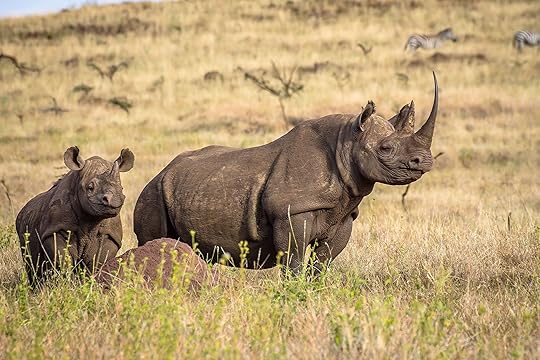
At the start of the year, we proposed places to travel to save the planet. That’s because we’ve seen the environmental good that can come when tourism dollars are used to promote the conservation of endangered places and animals. In Africa, for example, the revenue that tourism generates is credited with saving many cherished species from extinction.
Now, with the world in lockdown, African parks are hurting. The savannahs, grasslands, mountains, and other wild landscapes that are home to rare rhinos, herds of elephants, threatened cheetahs, mountain gorillas, and other threatened species are now empty of tourists.
What’s happening now
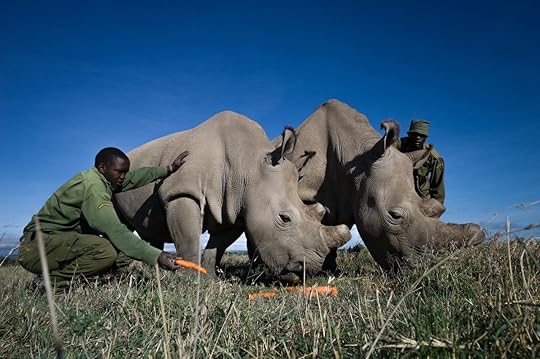
Photo: Ol Pejeta Conservancy/Facebook
The effects of the loss of international travelers are deep and potentially devastating. For one, tourists, both with the money they bring in and with their very presence, protect against one of the biggest threats to African conservation areas: poaching.
“There’s no tourism at all, so most places have laid people off temporarily… There’s nobody around in the parks and the lodges. The staff, the guides, and the tourists are no longer there, so that means it’s a little easier for people to sneak in and do nefarious things,” says Peter Knights, CEO of WildAid, which works to end the illegal wildlife trade.
In South Africa, poachers seized an opportunity when the government first announced lockdown measures, says Dereck Milburn, Southern Africa Project Director for the Aspinall Foundation, which is dedicated to rewilding endangered animals and rebuilding wild populations threatened with extinction.
“As the [South African] president mentioned that the country would be going into lockdown, the poaching numbers increased dramatically,” says Milburn. “We lost nine rhinos in the first week.”
However, South Africa is currently feeling a bit of a reprieve, and poaching incidents are now down since the empty roads resulting from the lockdown means it’s a lot harder to travel unnoticed.
“Our borders are shut, our roads are locked down, so they can’t get the horns out of the country,” says Milburn. But the good news is only temporary. “As soon as lockdown is over, we might find a massive spike in poaching.”
Beyond discouraging poachers with their presence, tourists combat poaching with the money they bring in. “The private sector depends very much on tourism to run their parks and generate an income. That income then goes to paying for anti-poaching,” says Milburn. “The number of patrols is [currently] stable, but if parks can’t sustain them, you might find patrol teams get smaller.”
While it has more diverse income sources, the Ol Pejeta Conservancy in Kenya is certainly feeling the loss of tourism revenue. Ol Pejeta is a model for its successful approach to integrated land use management — meaning in Ol Pejeta’s case that cattle ranching occurs in the same spaces where its wildlife roams. Nonetheless, tourism still accounts for 55 percent of its annual budget, says Richard Vigne, Ol Pejeta’s Managing Director. Without its 110,000 annual visitors, Ol Pejeta will have a big hole in its budget.
Yet Ol Pejeta is also home to the last two northern white rhinos on Earth and, following decades of strong conservation efforts, now holds the largest population of black rhinos in eastern central Africa, says Vigne. Those rhinos are expensive to protect.
“We’ve managed to cut our budgets by around 25 percent between now and December 2020, and inevitably that comes at a cost to our ability and our capacity to provide the kind of security environment that is necessary to secure rhinos,” says Vigne.
While in Ol Pejeta the threat comes from poaching syndicates, in other areas of Kenya — and elsewhere in Africa — many more people may resort to poaching as a source of food. With the coronavirus’s impact on the economy, “I think it will result in people trying to poach wildlife for food and for sustenance in what I would call non-commercial bushmeat poaching,” says Vigne.
The coronavirus also threatens wildlife directly. In New York’s Bronx Zoo, one tiger was very ill with coronavirus and others exhibited symptoms of the illness. The risk may exist for big cats and other mammals in Africa, too, and could be greatest for our closest cousins, primates.
Already in places like Rwanda, tourists have long been barred from visiting the mountain gorillas if they had a cold. With humans sharing over 98 percent of the same genes as gorillas, the risk of passing on an illness to them is considerable.
The Aspinall Foundation has a gorilla orphanage in the Congo, which it’s used to transfer orphaned gorillas back into the wild. Given the threat of the coronavirus, Milburn says, “We’ve had to change how we operate there. We’ve had to change how we handle the food of the animals, we’ve had to sanitize and use protective gear. It’s definitely had an impact on taking care of the animals.”
The hopeful news
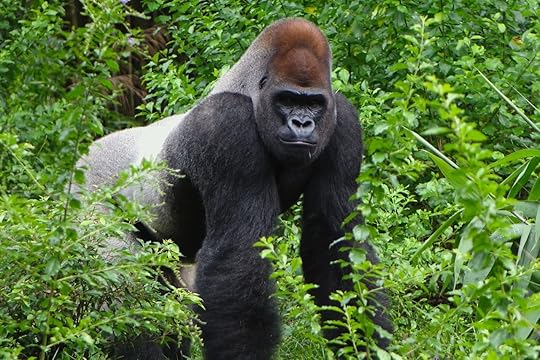
Photo: CXI/Shutterstock
Despite the economic impact on conservancies and national parks, the threat of poaching, and the direct risk of the virus to Africa’s animals, the coronavirus has brought a tiny bit of good news and a little bit of hope.
For one, the absence of tourist traffic has reduced the pressure of people and pollution on busy parks like South Africa’s famed Kruger National Park, says Milburn. Add in the current, albeit temporary, lull in poaching, and it’s been a “short term win for the rhinos,” he says. More significantly, Milburn is hopeful that the current pandemic is finally what it will take to end the wildlife trade.
“If they’re banning the trade and the consumption of these animals in the East, it’ll have a massive impact on what we’re doing in Africa,” says Miburn. Milburn says that the huge amount of resources dedicated to protecting animals — up to 70 percent of operating budgets — could be spent instead on developing other parks and more productive uses. “That’s what I’m excited about: the long term impact,” he adds.
There are hopeful signs that’s already happening. Knights, whose organization is dedicated to ending the illegal wildlife trade, says, “The good news is that we think that there will be restrictions on wildlife going forward. The Chinese have already published a list — a list that’s much, much shorter than they’ve had before — of species that will be allowed to be bred or consumed.” The list is still longer than it could be, but it’s a start.
And in a statement on April 22, the US Secretary of State Mike Pompei cited the link between the sale of wildlife and disease, calling on China to “permanently close its wildlife wet markets and all markets that sell illegal wildlife.”
Beyond this, the loss of tourism for the near term may force some parks to think more creatively about their funding, believes Ol Pejeta’s Vigne. “We’ve traditionally been lazy, we’ve been reliant on tourism, we’ve been reliant on philanthropy, and none of that is ever enough,” he says.
“I see efficiency developing within the world of conservation and innovation to make money where tourists don’t exist. So that’s a good thing, to strengthen the business, if I can put it that way, for the longer-term future,” says Vigne.
For their part, Ol Pejeta had already been thinking of new ways to expand their revenue and share their treasures with the wider world. “We’re home to the last two northern white rhinos left on the planet, so we’re doing a virtual classroom where we’re targeting school kids, where we take rhinos to them, because they can’t come here,” says Vigne.
In addition to that, Ol Pejeta has “Sofa Safaris” where you can log on and follow the same guides as they do a game drive every day between four and six in the afternoon. You can be sitting in your apartment and see what guides are doing and what animals they see.
“We’ve always recognized, there’s a limited number of people we can accommodate in this conservation area on a daily/yearly basis. If we’re going to continue to grow our business, then we’re going to have to find other ways of people having access here without necessarily coming in person,” says Vigne.
What you can do
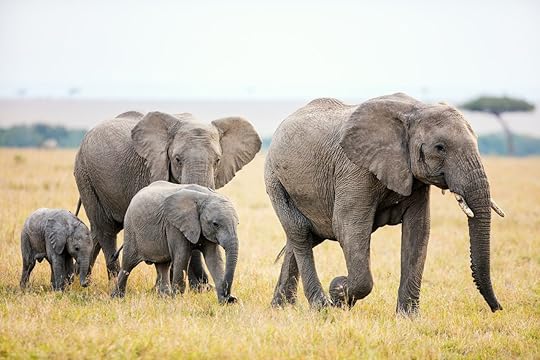
Photo: BlueOrange Studio/Shutterstock
Ol Pejeta’s approach is a creative way to get people involved in the care of animals, even when they can’t get on a plane and support conservation efforts with their tourist money.
Certainly you can look for organizations that are working on behalf of animals — like the Aspinall Foundation, Ol Pejeta, or WildAid — and send them a donation, if you are fortunate enough to be able to afford one in these tough times. Your money is definitely needed and welcome.
You can also take some time to analyze your own habits and ensure you aren’t supporting that illegal wildlife trade by buying clothing that doesn’t use animal products obtained from endangered species and seeking out only certified goods. You can make sure adopt local pets that are in-need, eco-friendly and sustainable (ie. not tigers), and you can petition your government to not support the illegal trade in ivory, for example.
But you can also connect with conservation groups in a more thoughtful way. The idea of a sofa safari, says Vigne, predated the coronavirus. “A virtual safari where a person in New York can literally sit at their desk and they can for $5 a month or whatever, tap into sofa safari, and go on a game drive with us, even though they’re not here — they see the same staff and have an interesting experience.”
Vigne says that things like the Sofa Safari allow others to engage with the conservancy on a regular basis. “So we give something back, they hopefully get some enjoyment, and we get a little bit of cash from each one of them — hopefully enough of them to make a major difference,” he says.
And, of course, there will be a time after the virus. Although travelers aren’t coming now, Vigne says they haven’t canceled their safari vacations, merely postponed them. This seems to be true across Africa. When visitors are ready to come back, the parks and reserves in Africa — with their guides and other employees and the impressive animals within them — will be ready to receive them. 

More like this: 5 quick actions you can take to protect public lands under attack this Earth Day
The post This pandemic will devastate Africa’s wildlife unless we rally right now appeared first on Matador Network.
Matador Network's Blog
- Matador Network's profile
- 6 followers



